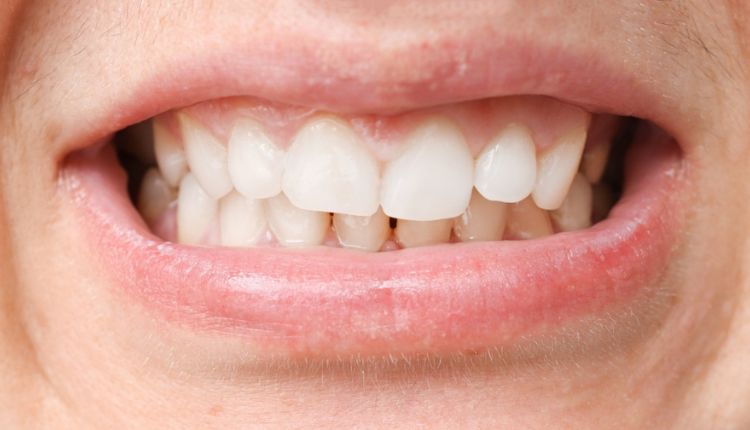Have you ever noticed that your teeth don’t quite come together the way they should? Maybe chewing feels uncomfortable, or your jaw clicks when you talk or eat. These signs could point to a dental misalignment — commonly referred to as a “bad bite” or malocclusion. While it might not seem serious at first, untreated bite issues can lead to long-term oral health complications. Let’s explore what dental misalignments are, how to spot them, and what treatment options are available.
Understanding Dental Misalignment
Dental misalignment occurs when your upper and lower teeth don’t fit together properly when your mouth is closed. Ideally, your teeth should align in a way that allows for comfortable biting, chewing, and speaking. When they don’t, it can put strain on your jaw muscles, wear down your teeth unevenly, and even impact your facial structure over time.
There are several types of misalignments, each with its own characteristics and potential issues. Here’s a breakdown of the most common ones:
Common Types of Bite Problems
Overbite
An overbite happens when the upper front teeth excessively overlap the lower front teeth. A slight overbite is normal, but a deep overbite can cause problems like gum irritation, enamel erosion, and even jaw discomfort.
Underbite
With an underbite, the lower teeth extend past the upper front teeth. This can give the chin a more prominent appearance and may cause chewing difficulties or speech impediments.
Crossbite
In a crossbite, some of the upper teeth sit inside the lower teeth rather than outside. This misalignment can affect a single tooth or several teeth and can lead to tooth wear, gum disease, and facial asymmetry.
Open Bite
An open bite occurs when the upper and lower front teeth don’t meet when the mouth is closed. This can make it hard to bite into foods like sandwiches or apples and often leads to speech problems or tongue thrusting habits.
Crowding
When there isn’t enough room in the mouth for teeth to align correctly, they can become crowded or overlap. Crowded teeth are harder to clean, increasing the risk of cavities and gum disease.
Spacing Issues
On the flip side, some people have too much space between teeth. Gaps can affect appearance and leave gums more exposed to bacteria and damage.
Signs You Might Have a Misaligned Bite
Bite issues aren’t always easy to notice, especially in mild cases. However, there are a few symptoms you can watch out for:
- Difficulty chewing or biting
- Jaw pain or tightness
- Clicking or popping in the jaw
- Frequent headaches
- Uneven wear on teeth
- Mouth breathing or speech difficulties
- Teeth grinding (bruxism)
- A visible misalignment when you smile
If any of these signs sound familiar, it may be time to visit a dentist or orthodontist for an evaluation.
Causes of Bite Misalignment
Dental misalignments can be caused by a range of factors, including:
- Genetics (many bite issues run in families)
- Prolonged thumb-sucking or pacifier use in childhood
- Tongue thrusting or mouth breathing habits
- Early or late loss of baby teeth
- Poor dental care or trauma to the face
Understanding the root cause can help determine the best course of treatment and prevent further issues from developing.
Treatment Options
The good news is that most bite issues can be corrected with professional dental care. Depending on the type and severity of the misalignment, treatment may include:
- Braces: Traditional metal braces are still a common and effective method for straightening teeth and correcting bites.
- Clear Aligners: Invisalign and similar products offer a more discreet way to shift teeth into place over time.
- Retainers: These are often used after braces to maintain the new alignment or in mild cases to make slight corrections.
- Jaw Surgery: In severe cases, especially involving structural jaw issues, corrective jaw surgery may be necessary.
- Dental Appliances: Devices like palatal expanders or bite plates may help reshape the mouth or retrain oral habits.
Regular dental evaluations — especially during childhood — are essential, as early detection often allows for easier and more effective treatment. Consulting a prosthodontist in Cleveland, Ohio, can provide the specialized care needed to address bite concerns and restore optimal oral health.
Don’t Ignore Your Bite
While it might seem like a purely cosmetic concern, a misaligned bite can lead to serious complications if left unaddressed — including chronic pain, tooth damage, and digestive problems from improper chewing. If something feels “off” with your bite, it’s worth bringing up with your dentist.
A proper bite doesn’t just enhance your smile — it protects your long-term health. Early diagnosis and treatment can make all the difference in preventing bigger problems down the road. So if you’ve been asking yourself, “What’s wrong with my bite?” — now is the perfect time to find out.






